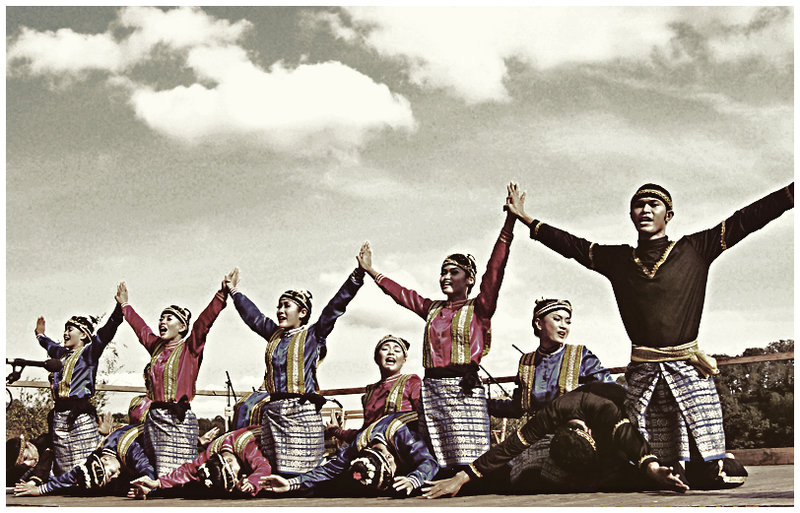
Saman dance is one of the media for the achievement of the message (Da'wah). This dance reflects the Educational, Religious, manners, heroism, solidarity and togetherness.
Before the start of a warrant mukaddimah or opening, appears a wise old man or a traditional leaders to represent the local community (keketar) or advice that is useful to the players and spectators.
Songs and poems together disclosure and continuous, the players consist of men who are still young by wearing traditional clothes. Presentation of the dance can also be staged, the group dipertandingkan guests with sepangkalan group (two groups). Ditititk assessment focus on the ability of each group in following the movements, dance and song (poetry) presented by the opposition.
Saman dance is usually presented not with the accompaniment of musical instruments, but using the voice of the dancers and their applause is usually combined with hitting the chest and groin them as synchronization and threw the body into various directions. This dance is guided by a leader who is usually called Syech. Because of the uniformity and timeliness of information is a necessity in this dance show, the dancers are required to have a high concentration of serious training in order to perform perfectly. This particular dance danced by the men.

In ancient times, this dance performances in certain customary events, including in the ceremony commemorating the birthday of Prophet Muhammad. In addition, particularly in the context of today, this dance is also performed on special occasions that are formal, such as guests visit the Inter-County and State, or the opening of a festival and other events.
Song of the dancers add dynamism of the dance saman. How to sing songs in the dance saman divided into 5 types:
1. Rengum, which is preceded by the roar of the lifter.
2. Dering, Regnum is immediately followed by all dancers.
3. Redet, namely a short track with a short sound sung by a dancer in the middle of the dance.
4. Syek, the song sung by a dancer with long, high-pitched voice, usually as a sign of change in motion
5. Saur, the song that is repeated along the whole dancer when sung by a solo dancer
Saman dance movements using two elements of the basic elements of dance saman: Clap clap hands and dada.Diduga, when spreading the religion islam, sheikh summons wilt learn the ancient dance, and then to re-pass the motion, along with poems by Islamic missionary preaching memudakan . In the present context, dances are religious rituals that are still used as a medium to convey messages preaching through the shows.
Saman dance including one dance that is quite unique, because they only show the motion of applause other movements, such as shaking movements, kirep, lingang, surang-filtering (all of this motion is Gayo language)
In general, Saman Dance performed by a dozen or dozens of men, but the amount must ganjil.Pendapat Others say this dance is danced more or less than 10 people, with details of 8 dancers and 2 as cue givers while bernyanyi.Namun, in the development in the modern era that demands that a dance that will be more lively when danced by dancers with higher numbers. To adjust the various movements ditunjuklah a leader called sheikh. In addition to regulate the movement of the dancers, Sheikh also served sing songs, poems warrant.


